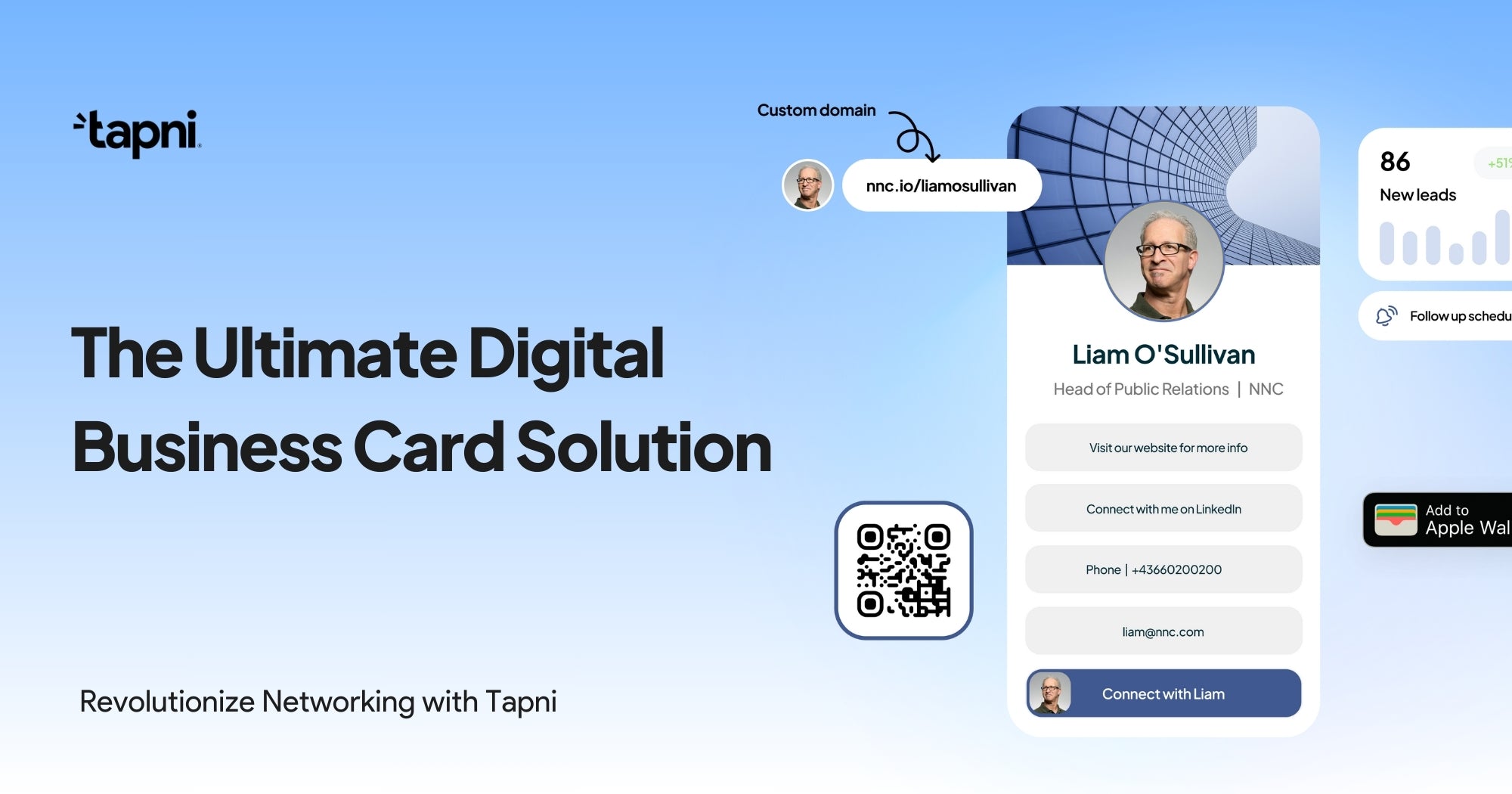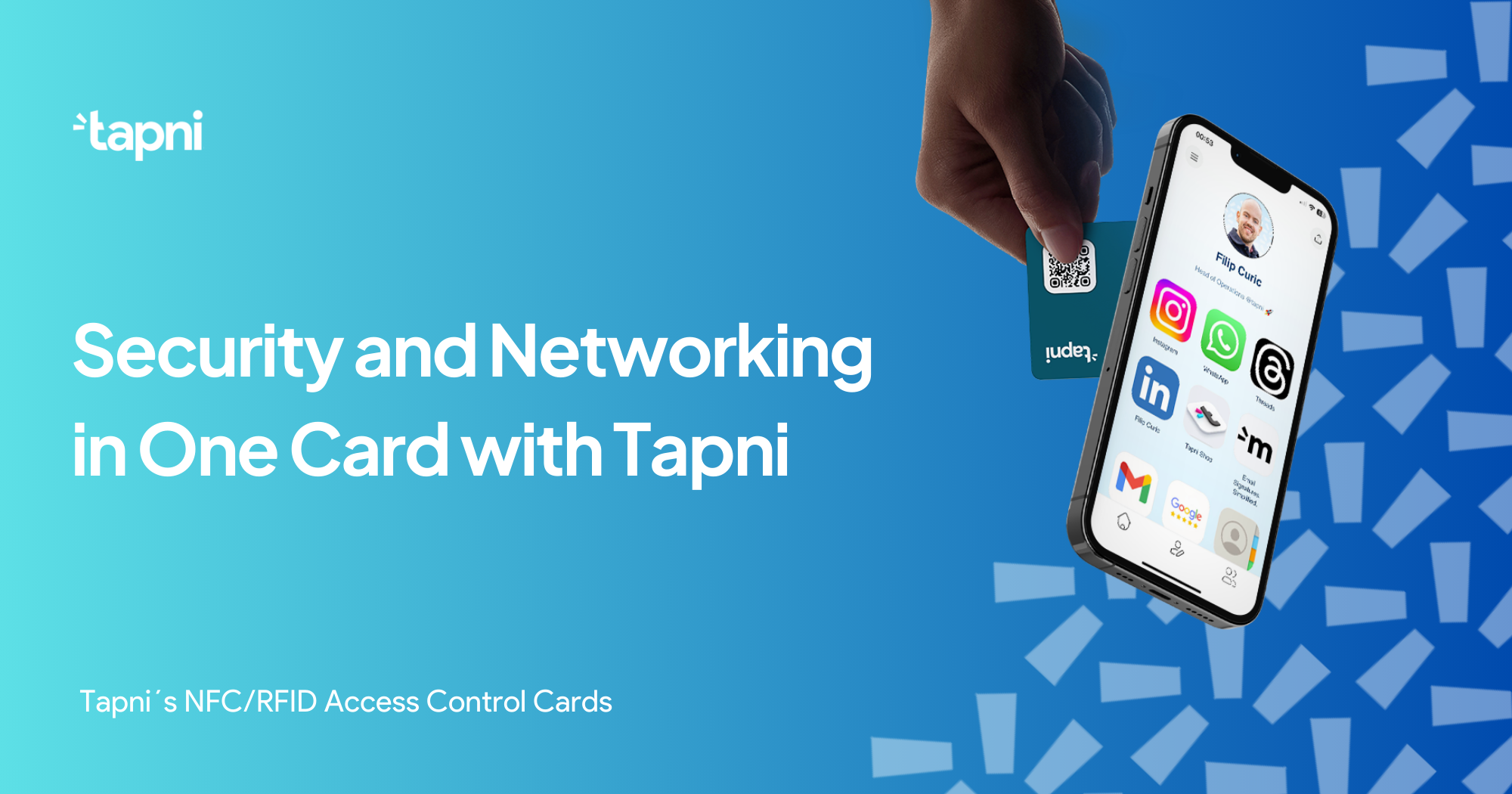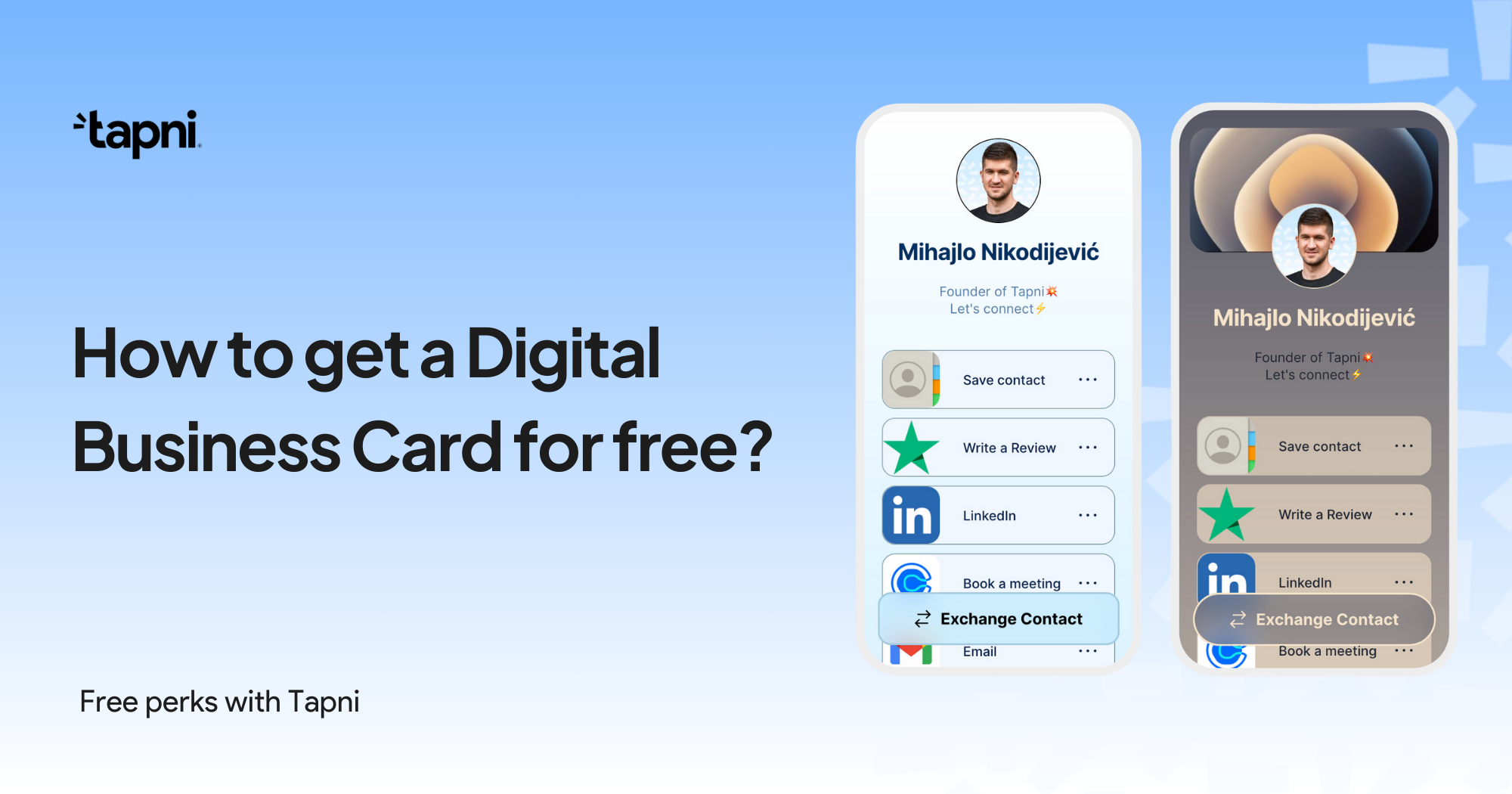Try Tapni today
Easily create and order new Digital Business Cards for current and new team members by synchronizing with your Azure, Google, or Slack Employee Directory in a matter of seconds.
Try Our Products
Digital Business Card vs Paper Business Card - Which is Better?
Once the staple of professional introductions, business cards have undergone a transformation with the rise of digital alternatives.
But does this mean we should abandon our trusty paper business cards altogether?
The answer is not that simple.
Thus, as the traditional paper business card faces increasing competition from its digital counterpart, the question arises: Which one is better?
Join us as we weigh the pros and cons of digital business cards vs. paper business cards.
Buckle up, and let’s go!
Digital Business Card vs. Paper Business Card - Definition
What is a Digital Business Card?

A digital business card is a more modern version of a traditional paper business card.
Digital business cards come in various formats, and you can easily create them using online platforms or specialized apps.
Despite versatile design options, most digital business cards include the same basic info:
- Your name,
- Job title and company name,
- Phone number and email address, and
- Website URL.
In addition, and depending on the digital solution you’re using, your digital business card can have additional features like social media links or QR codes for quick scanning.

What is a Paper Business Card?

A paper business card has been the traditional way of exchanging contact information for decades.
Paper business cards are typically made of sturdy paper or cardstock and contain essential details about a person or a company.
These details usually include the individual's name, job title, company name, phone number, email address, and physical address.
And although you can also get creative when it comes to design, paper business cards have limited space for information.
Just as with any product, both types of cards have their pros and cons, so let’s check in more detail the potential decisive factors in the digital business card vs. paper business card battle.
Digital Business Card vs. Paper Business Card - 10 Major Factors to Consider When Choosing Your Card
1. Flexibility and Outreach
Digital business cards enable you to exchange contact details globally because they don’t require physical presence. Thus, the possible outreach is much wider.
Furthermore, with digital business cards, you don't have to worry about carrying around stacks of cards or running out of them at crucial moments.
🏆The winner: Digital business cards.
2. Tracking
Perhaps one of the biggest advantages of digital business cards over paper ones is that you can actually see the metrics and how many people viewed your digital profile.
In addition, if you host a networking event, you can get valuable insights into ROI, top performers, etc.
🏆The winner: Digital business cards.
ProTip: With Tapni, for example, you can understand event networking activities better by getting actionable analytics.

3. Personalization & Customization
Design-wise, you can get very creative with paper business cards. You can choose colors, fonts, and materials, incorporate your logo, a custom-made image, etc.
However, digital versions allow for more
✨ creativity,
✨ interactivity
✨ dynamic content, and
✨ customization options.
For example, you can incorporate eye-catching visuals and multimedia elements like images, videos, and portfolios.
Therefore, you can showcase your work and provide potential clients with more comprehensive information about your services.
🏆The winner: Digital business cards.
4. The Impact on the Environment
If you know that people throw away approximately 88% of business cards within a week, the environmental impact of paper business cards is humongous.
Translated to “the language of trees,” it takes 7.2 million trees annually to produce business cards.
As a result, digital counterparts seem to be much more environmentally friendly.
However, most digital business cards are made from plastic, which isn’t exactly a treat for the environment.
Nonetheless, you usually have only one digital card instead of hundreds of paper ones. Therefore, although digital business cards also affect the environment, their negative impact is considerably smaller compared to their paper counterparts.
🏆The winner: Digital business cards.
ProTip: Some digital solutions, such as Tapni, actually plant a tree for every digital card made. How 😎 is that?

5. Technical Requirements
Being dependent on internet access makes the use of digital business cards limited compared to paper business cards.
Therefore, relying solely on a digital business card could potentially limit your reach when networking in case there is no internet access or you deal with individuals who prefer traditional methods.
🏆The winner: Paper business cards.
6. Safety
Many people have concerns about privacy and security when it comes to sharing personal contact details digitally.
And yes, like with any digital product, there is still a risk of data breaches or unauthorized access.
However, the risk is minimal with professional digital platforms since they use state-of-the-art security systems.
For example, most platforms are SOC 2 compliant, type 1, or store all data on Amazon Web Services.
In addition, they are GDPR compliant.
🏆The winner: Paper business cards, although digital business cards are considered safe, too.
7. Exchanging Information
When it comes to exchanging information, we should mention two aspects:
- Physical exchange of business cards, and
- The amount and type of information you can share.
Thus, depending on the aspect, we may call a draw here.
Physical Exchange
One of the main advantages of paper business cards is their tangibility.
Handing someone a physical card at networking events creates an immediate connection between you and your potential client or partner.
Furthermore, it allows for face-to-face interaction and gives off a sense of professionalism.
🏆The winner: Paper business cards.
The Amount and Type of Information
Digital business cards shine when it comes to the amount and type of information you can share.
Not only can you include interactive material, such as videos, but you can also share your info in a number of ways:
- By scanning a QR code,

- Via text messages
- Via email
- Via social media channels
- Via the NFC technology
- Via URL, etc.
Therefore, sharing contact information has become easier than ever.
🏆The winner: Digital business cards.
8. Durability
One of the biggest drawbacks of paper business cards is their durability, i.e. the lack of it.
Therefore, they can easily get lost or damaged over time. Moreover, people may misplace them in their wallets or purses along with countless other cards they receive at events.
Thus, they often end up forgotten or thrown away when decluttering their workspace.
On the other hand, digital business cards are made from more durable materials, making them more long-lasting.
🏆The winner: Digital business cards.
9. Cost
In addition to being flexible in terms of content, digital business cards also allow for easy information updates.
For example, if your phone number changes or you want to add new achievements or accolades, simply update the information on your digital card without needing costly reprints.
On the other hand, printing large quantities of paper business cards can be financially and environmentally costly.
Constantly replenishing supplies may not align with sustainable practices, and it isn’t practical to print a new batch of business cards every time you want to update the info.
🏆The winner: Digital business cards.
10. Making First Impressions
Due to many more customization and design options, digital business cards will likely make better first impressions.
Furthermore, when linked to your digital profile, you can really create a wow effect and be memorable and original.

🏆The winner: Digital business cards.
Digital Business Card vs. Paper Business Card - The Final Verdict
When it comes to choosing between a digital business card and a paper business card, the decision ultimately depends on your specific needs and preferences and your target audience.
Paper business cards have stood the test of time, and their tangibility and more personal feel make them a popular networking staple.
However, it would be a great pity not to exploit all the benefits digital business cards have to offer.
Why Go for Tapni?
Tapni is a digital solution that goes beyond creating digital business cards and accessories.
With Tapni, you can also:
💣 Automate Lead Generation by importing new connections to your CRM system.

💣 Create fully-customizable digital business cards
💣 Get Actionable Analytics to get valuable insights from a networking event.
💣 Share info in multiple ways.
💣 Create a Custom Link to display only the digital profile you want your contacts to see.

💣 and so much more.
Curious to find out more?
Create your Tapni digital business card today and redefine how you connect to the world around you.
FAQ
1. Are Paper Business Cards Still Relevant?
Paper business cards are a networking staple, and depending on the type of industry and target audience, they do remain relevant.
However, their digital counterparts are more practical and cost-efficient.
2. What are The Disadvantages of Paper Cards?
The biggest disadvantages are:
- The limited space to include your info,
- The lack of interactivity and fewer sharing options,
- Negative impact on the environment, and
- The cost.
3. What are The Benefits of Digital Business Cards?
The biggest benefits are:
- Limitless options in terms of design,
- Multiple ways of sharing info
- Being environmentally-friendly
- Durability, and
- Cost.
Keep Learning
How To Create a Digital Business Card - 6 Steps To Digitalization
What To Do With Old Business Cards - 17 Best Repurposed Ideas
Subscribe to Tapni
Sign up to our newsletter and we’ll keep you up to date with the latest arrivals.








